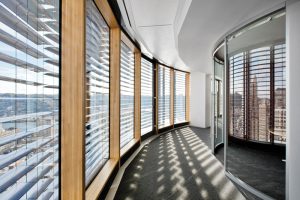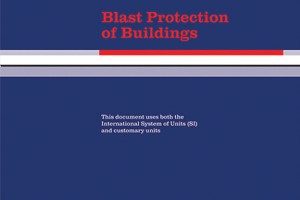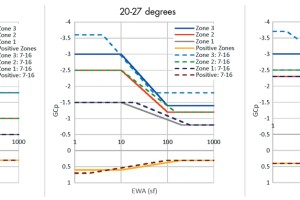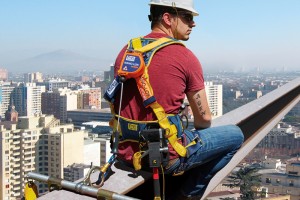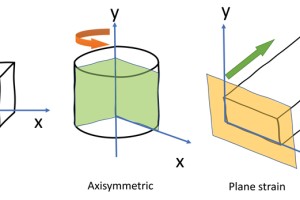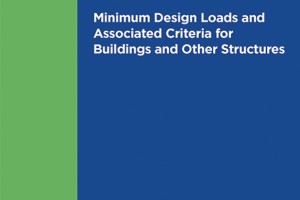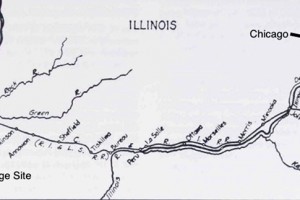The National Council of Examiners for Engineering and Surveying (NCEES) intends to transition the SE Exam to a computer-based test (CBT). NCEES began the process of transitioning its licensing exams to a CBT format in 2011, and the SE exam is the last to undergo the change. Starting in 2024, the current two-section, 16-hour Structural Exam will be replaced with the new computer-based test. But here’s the rub: the new exam will be expanded to four sections and a length of 21 hours.
…Yearly Archives : 2022
Components That Insulate Concrete and Steel Penetrations
Structural thermal breaks prevent condensation and mold, reduce heat loss through envelope penetrations, lower energy costs and carbon emissions, and reduce owner liability – while meeting increasingly stringent building energy codes.
…Revisions to ASCE/SEI 59
The events of 9/11 changed many owners’ perceptions of the risk to their facilities. Their fear of malicious threats thrust practicing structural engineers into an unfamiliar role. As a result, structural engineers needed to learn how to quantify and analyze for blast effects as they assisted their private clients with the evaluation of threats to their facilities and the means to provide prudent, reasonable, and effective resistance. In response, the Structural Engineering Institute (SEI) of the American Society of Civil Engineers (ASCE) developed a new standard, ASCE/SEI 59 Blast Protection of Buildings (ASCE 2011), describing how engineers could design blast resistance into structures.
…Revised Component and Cladding (C&C) wind load provisions in ASCE 7-22, Minimum Design Loads and Associated Criteria for Buildings and Other Structures, produce in most cases either the same or slightly lower pressures than would occur under the prior edition while also preserving the extensive wind tunnel testing basis of the ASCE 7-16 C&C wind provisions.
…The design of structures utilized to support fall protection systems (FPS) for workers at height is a topic that is often researched and questioned but is not a straightforward process. Unlike other common structures with design requirements such as loads, factors of safety, and minimum requirements defined in their respective codes and design guides, the design requirements for fall protection loads can be somewhat ambiguous. This article aims to provide a basic overview of FPS, define what regulations and standards exist in this space, and recommend a best practice approach for engineers to define strength requirements for fall protection anchorages.
…Bored piles primarily carry static vertical loads when supporting a building. In designing such piles, the shaft resistance and end bearing are often estimated when determining the pile’s load-carrying capacity. To ensure satisfactory performance, the pile also needs to meet specific settlement criteria at working loads. One helpful aid in pile design is using numerical simulations. With advances in computing, access to numerical simulations has become widely available and often quite economical. This article highlights some practical aspects of numerical simulations which can be helpful in pile design.
…Using ASCE/SEI 7-22
Designers using the 2022 Edition of the ASCE/SEI standard Minimum Design Loads and Associated Criteria for Buildings and Other Structures (ASCE/SEI 7-22, ASCE, 2022) will find significant changes to the seismic design of diaphragms and their chords and collectors: a new diaphragm design methodology added, an existing methodology expanded, significant changes affecting bare steel deck diaphragms, and more. This leaves the user needing to choose between three methods of diaphragm seismic design and needing to incorporate other updates into their designs. The changes were generated from research and code development efforts that go back years, with contributions from many, including research and guideline development teams and the NEHRP and ASCE 7 update participants. This article provides an overview of these changes to diaphragm seismic design from the designer’s perspective.
…What You Always Wanted to Ask
This quarterly article addresses some of the questions received about structural standards developed by the Structural Engineering Institute (SEI) of the American Society of Civil Engineers (ASCE). Following are some questions received by SEI and responses to clarify the provisions. Questions from engineers, building officials, and other design professionals are often considered to develop future standard editions.
…Alaska’s Bridge Builder
Dennis Nottingham, P.E., was a bridge builder. “I designed a lot of bridges, the big ones. The Yukon. The Gulkana. I worked on every single bridge – construction bridges, access bridges – on the Trans-Alaska Pipeline in some form or another,” Nottingham said during his company’s 40th-anniversary celebration in 2019 in Anchorage. His Hall of Fame biography credits Nottingham with more than 300 bridge designs in Alaska.
…19th Century Mississippi River Bridges Series
As early as 1842, some early promoters of the Transcontinental Railroad selected a route that would cross the Mississippi between Rock City, Illinois, and Davenport, Iowa. They chose this site based on a survey in 1837 by Lt. Robert E. Lee, as the river was narrow and separated by Rock Island, the home of a former army fort. This would require a bridge over each branch and an embankment across the island. In 1850, Congress passed an act granting public lands to railroad companies to encourage the country’s development. Congress also passed an act, in August 1852, granting a right-of-way for rail and plank roads on public lands.
…

